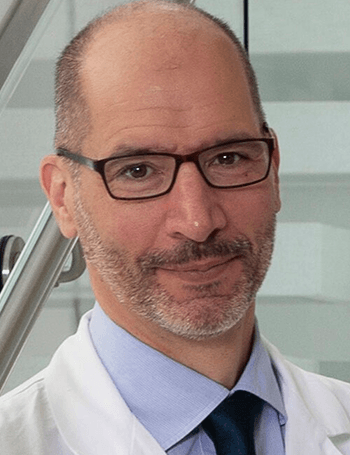Miguel Valderrábano, MD, PhD, is a physician-scientist practicing interventional cardiac electrophysiology. His initial research studied the role of normal anatomical structures (e.g., papillary muscles, fiber orientation changes) in perpetuating ventricular fibrillation (VF) by disrupting the spread of the electrical impulse. Valderrábano was the first to demonstrate intramural reentry during VF, and described the interplay between fixed structural heterogeneities and (dys)functional, dynamic cellular behavior in arrhythmias, such as of fiber orientation changes in spatially discordant alternans, conduction block and reentry, and elucidated the roles of calcium and electrical alternans in regional ischemia/reperfusion arrhythmias.
Bridging from the lab to the clinic as a practicing proceduralist, he has led the development of novel, mechanistically-based therapeutic approaches for catheter ablation of cardiac arrhythmias. Based on mechanistic connections between cardiac innervation and atrial fibrillation via the ligament of Marshall, he pioneered the procedure of retrograde ethanol infusion in the vein of Marshall as an ablation tool in the treatment of atrial fibrillation and perimitral flutter. He took the procedural technique from conception, to animal validation, and to a completed multi-center clinical trial that has been the basis for a commonly performed procedure that leads to improved outcomes.
Bridging from the clinic to the laboratory, he has demonstrated the role of cardiac autonomic activation in sleep apnea-related atrial fibrillation by showing a concomitant sympathetic and parasympathetic activation leading to pro-fibrillatory electrophysiological changes in the atria.
He also expanded the retrograde venous ethanol infusion technique to ablation of refractory ventricular tachycardia, leading to new hope for patients with ablation-refractory arrhythmias. He is also known for his contributions in left atrial appendage occlusion procedures for stroke prevention in atrial fibrillation.
His group covers the spectrum from cellular to procedural electrophysiology, including basic bench research and clinical trials.
